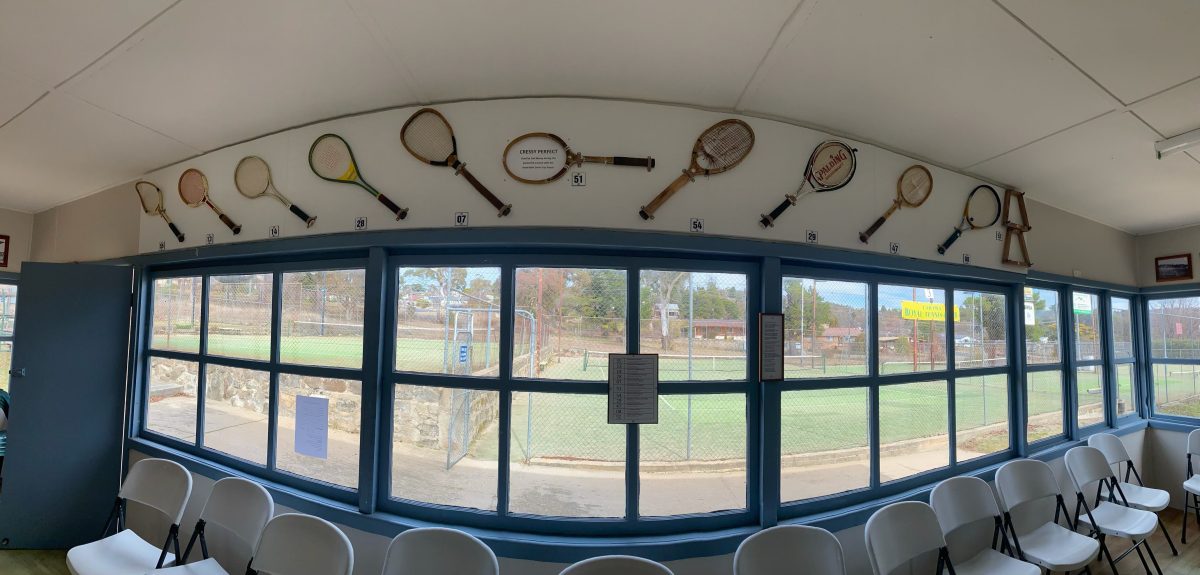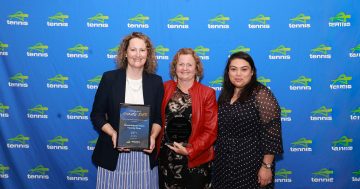
For more than 100 years, this tennis club has provided much more to Cooma residents than a place to exercise. Photo: Supplied.
It all began in May 1921 during a meeting at Cooma’s Royal Hotel – the local Progress Association agreed to rent two existing tennis courts to a newly formed club.
At the cost of £5 – or $10 – a year, Cooma’s Royal Tennis Club began its now-102-year history.
Club president Mick Askell said it had come a long way since its humble beginnings, but it had always been embraced by the wider community.
“In country areas, sport has always brought communities together and tennis in the Monaro is no exception,” he said.
“The Cooma Royal Tennis Club provides a venue for the community to get together, play tennis socially and competitively, create friendships and, more importantly, build community spirit.”
It wasn’t an ace start, however. The courts were in such poor condition the club’s first job was rebuilding the fences and netting, but a grand opening was eventually planned for a Wednesday (an attempt to drum up numbers as most of the shops in town closed on Wednesday afternoons).
Facilities on and off the courts would grow in the coming years, with water first laid to the courts in 1922 to keep the surfaces up to scratch, while the 1930s saw the construction of the first clubhouse, consisting of a single room that has since become the kitchen.
The first lighting was installed in December 1927 and lighting for all courts followed in 1978.
More recently, upgrades to six synthetic courts have improved conditions for players.
In 1929, the organisation began accepting junior players as club members.
According to the club’s official history, local schools and convents were invited to conduct trials to find the best three boy and girl players in town, who were offered free membership – but not afforded standing for meetings.
In 2024, club secretary Alison Starr said a family-friendly membership rate meant people of all ages could enjoy a hit.
“Playing tennis covers generations of players and there’s really a continuity of players and families through the club,” she said.
“The group playing on Wednesday night has been playing for around 35 years and over that time the group has seen families come and go, and the kids come up and play in the same team as other family members.”
The club’s official history shows the number of courts and competitions has also expanded over the years.
Matches between Cooma and clubs from neighbouring areas Dalgety, Jindabyne, Michelago and Bredbo were hotly contested, with championships played until the start of World War II.
From the start of the war, the club’s history notes that “with a gap of 30 years in the minute books we rely on the memories of people for information during that period, errors and omissions are therefore regretted”.
Some memories have been written, such as the record that recalls how “tea was made in a four-gallon bucket (about 18 litres) and suspended over an open fireplace near the end of the court before being carried up to the clubhouse. This duty usually fell to the court captain”.
Life member Kath Nichols said a sense of belonging was part of what made the club so special.
“Royal Tennis Club has always been known as a friendly, inclusive club,” she said.
”With Cooma being a truly multicultural town, newcomers are made very welcome at the club for both social and competition tennis.”
In recent years, the courts have been affected by drought and extreme rainfall.
The club received $449,020 from the NSW Government to resurface six grass courts, install new nets and posts on each court and upgrade lighting, with the final lighting works due to be completed in the first half of 2024.
Ms Starr said the club hoped to continue to hold its place in the community for many years to come, beyond providing a space for people to play tennis.
“It really is a great place to come and just socialise,” she said.
”There’s a timeless appeal. It’s good for physical fitness and mental health. During the bushfires and even during COVID-19, tennis was able to keep going compared to many other sports because of social distancing.”
Department of Regional NSW executive director Harriet Whyte said supporting sporting facilities was key to building strong and resilient regional communities such as Cooma.
“Sport brings our communities together. It gives us common ground and a space to build relationships and a sense of connection through shared wins, losses, and memories created on and off the court,” she said.









